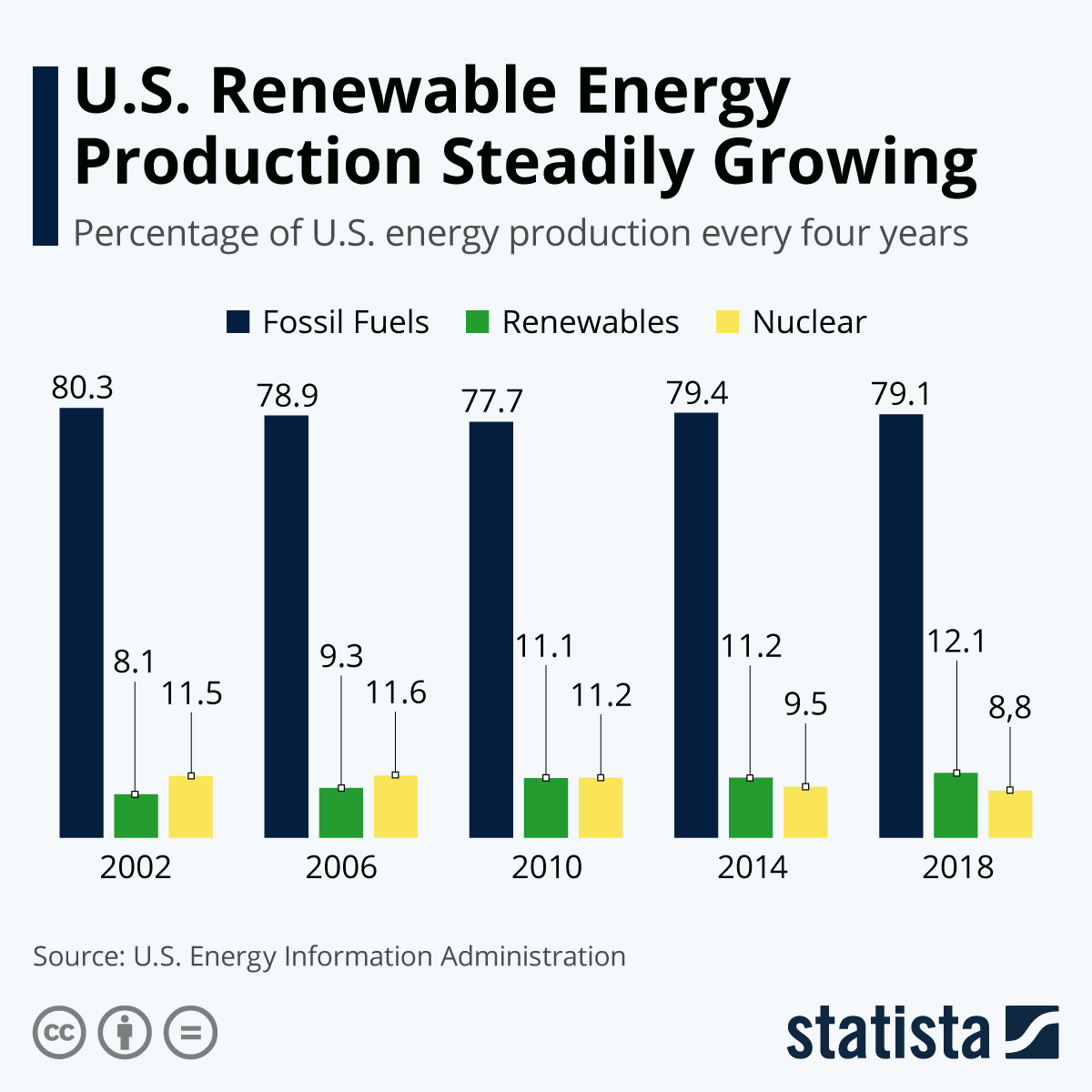While fossil fuels remain the dominant form of energy production in the U.S., renewable energy production has steadily risen over the past two decades to overtake nuclear energy production in the country.
According to the U.S. Energy Information Administration, renewable energy relative to the total energy production has increased by 4 percent from 2002 to 2018, while nuclear electric energy has fallen by about 3 percent.
Fossil fuel production remains a key energy source for the U.S. and is partly driven by a surge in natural gas production in recent years. From 2000 to 2018, production increased from over 50 billion cubic feet per day to over 80 billion, with a 12 percent increase in 2018 alone. Overall, 31 percent of all energy consumed in the U.S. was from natural gas in 2018.
The slow rise in renewable energy production in the U.S. primarily stems from the country’s need to meet an ever-growing energy demand. From 2000 to 2018, total energy consumption in the country increased by over 2 quadrillion Btu. The increase in renewable production seems less to do with the country’s willingness to cut carbon emissions and more to do with finding as many alternative energy sources as possible to meet a rapidly growing demand for energy.





















